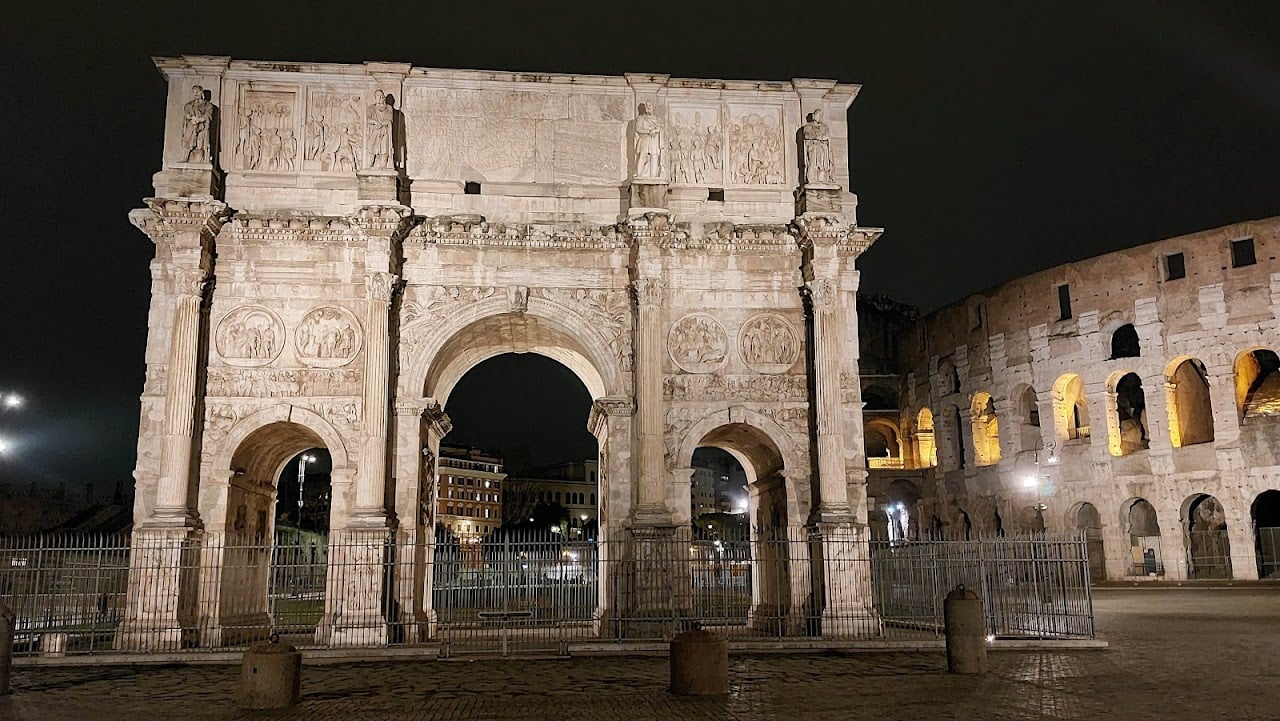Arch of Constantine





Ask ThatchGPT
Suggest a local expert to plan my trip
Suggest an unique itinerary for my Italy trip
What foods do Italy locals eat
What are some true hidden gems in Italy
Help me brainstorm trip ideas for Italy
Help me plan a family-friendly trip to Italy
What people say
Pedro Pereira
Available for hire
"The Arch of Constantine, also known as the Constantinian Arch, is a triumphal arch gracing Rome, Italy. Built between 312 and 315 AD, it stands as a powerful symbol of victory and a testament to the evolving artistic styles of the Roman Empire.
Commissioned by the Roman Senate, the arch celebrates the emperor's triumph over his rival Maxentius at the Battle of Milvian Bridge in 312 AD. This victory marked a turning point in Roman history, paving the way for Constantine's rise to sole rule and his eventual shift towards Christianity.
The Arch of Constantine is a fascinating blend of artistic styles. While its overall structure adheres to the classical Roman triumphal arch form, the decorative elements reveal a shift towards a more intricate style. The arch incorporates sculptures from earlier Roman monuments, a practice known as spolia. These reliefs depict scenes from battles, sacrifices, and imperial processions, offering a glimpse into earlier artistic sensibilities. Additionally, the arch features newly created panels showcasing Constantine's victories and hunting scenes in a more detailed and expressive style, hinting at the artistic trends that would come to define the Late Roman Empire.
Standing tall at 21 meters high and 25 meters wide, the Arch of Constantine is one of the best-preserved triumphal arches in Rome. Its imposing presence and intricate details continue to captivate visitors today.
Strategically positioned between the Colosseum and the Palatine Hill, the Arch of Constantine served as a monumental gateway to the heart of ancient Rome. It not only commemorated a significant victory but also reflected the changing artistic landscape of the empire. Exploring this remarkable structure allows visitors to step back in time and gain a deeper understanding of Roman history, art, and culture."
Read more in:
Alex Ayling
Available for hire
"Just opposite the Colosseum is the Arch of Constantine. It was built to commemorate the victory of Emperor Constantine I (ruled 306-337 AD) in the Battle of Milvian Bridge in 312 AD, which played a significant role in his rise to power.
The arch is situated near the Colosseum and stands as a testament to the Roman imperial style of architecture. It was completed in 315 AD and is the largest surviving ancient Roman triumphal arch. The structure is approximately 21 meters high, 25.9 meters wide, and 7.4 meters deep.
The arch is composed of three archways, with the central arch being the largest and tallest. It is adorned with decorative reliefs and sculptures, many of which were repurposed from earlier monuments and structures.
These sculptures depict various scenes from Roman history, including battles and victories. The Arch of Constantine serves as a symbolic link between the pagan past and the Christian future.
It is believed to have played a role in the promotion of Christianity by Constantine, who became the first Roman emperor to embrace the Christian faith.
Over the centuries, the arch has undergone restoration and conservation efforts to preserve its historical significance. Today, it remains an iconic landmark in Rome and a popular tourist attraction, offering visitors a glimpse into the grandeur of ancient Roman architecture and the legacy of Constantine's reign. "
Read more in:
Batzaya Struble
"Towering between the Colosseum and Roman Forum, the triumphal Arch of Constantine continues to be one of the most impressive ancient monuments in Rome almost 2,000 years after it was built. This much-photographed landmark is a must for Roman history buffs and a highlight of ancient Rome and Palatine Hill tours."
Mentioned in these guides
About Arch of Constantine
Get the inside scoop on Arch of Constantine from local experts, travel creators, and tastemakers. Browse genuine trip notes, Arch of Constantine reviews, photos, travel guides, and itineraries from real travelers and plan your trip with confidence.
Phone
Save this spot for later or start mapping out a new trip today
Try our AI Travel Assistant and get instant answers to any questions about your trip.
Ask ThatchGPT


